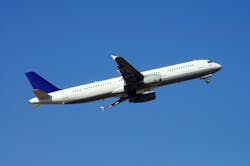Between Narrow and Wide-Body: Is There an Aircraft for the Niche Midsize Market?
In late January 2016, Delta Airlines reported having already started scheduling its upcoming Airbus A321s within the route network. The first liner out of 45 Airbus A321s ordered by Delta back in 2014 is set to be delivered later in February. In total, throughout 2015 carriers from all over the world placed orders for 294 new A321s, thus refuelling the discussion whether the airline industry needs middle-of-the-market (MoM) aircraft after all.
On average, narrow bodies like Boeing 737 or Airbus A320 carry 170-200 passengers. The wide-body segment jumps to 300+ seats which leaves a noticeable gap in between. Previously, such airplanes as Boeing 757 and older versions of Boeing 767 had served as the middle option with 200-269 seats, but today these models are no longer in production due to their inefficiency.
In the meantime, as both domestic and international air passenger traffic keeps growing and the load factor remains strong (76-86% in Europe, North America and Asia), many airlines have identified the need for slightly larger capacities on high-density short-haul routes.
In 2014, airlines worldwide transported over 3 billion passengers. Although the hard data is yet to be presented, experts predict that in 2015 this number increased by another half a billion. This impressive growth can be largely attributed to the markets in Asia and the Middle East, where carriers have been enjoying a 10% annual growth in the number of fliers for quite a while now.
According to industry experts, there are several ways of how one can seize the growing demand in the regional market: acquire several additional smaller airplanes or invest into one or two larger aircraft. But if on a certain regional route you have a niche demand for 200-300 seats, you can either split the traffic to several flights (and risk losing some of the passengers whilst sending the plane half-empty) or introduce a wide-body aircraft to the route. The latter solution, however, is far from the best either.
“Whether it is Airbus A330 or Boeing 787, wide-bodies are just too powerful and overly heavy to carry 200-250 passengers on a 1000-2000 km long route. Moreover, operating a wide-body for a short-haul flight means that the aircraft will run out of its resources substantially faster than planned. And repairing a wide-body sometimes calls for a dozen times larger investment than in the narrow-body case“, comments Tadas Goberis, the CEO of AviaAM Leasing.
As concern the narrow-body segment, these aircraft are produced for exceptionally intense operations with high flight density and quick turnaround times at the airports. Moreover, navigation, maintenance, crew and other expenses can be up to 1.5-2 time lower than the ones for most wide-bodies. Unfortunately, none of the existing narrow-body machines have the capacity to carry more than 220 passengers.
“Nowadays more and more air carriers are willing to change their Airbus A320s and, in very rare cases, even Boeing 737-900s to Airbus A321ceo or Airbus A321neo. Econometrics show that airlines can gain larger capacity (~30-40 extra seats) subject to as little as 15% rise in costs. Meanwhile, the introduction of a wide-body might trigger a double leap in operational expenses. Then there is also the risk of flying half-empty to consider“, says the CEO of AviaAM Leasing
At the end of the day, neither narrow-body nor wide-body airplanes can fit the MoM segment perfectly. However, the niche demand for several dozens or even a couple of hundreds of airplanes with 200-300 capacity is clearly insufficient to prompt any major manufacturer to even consider making a multi-billion investment into developing a MoM aircraft. Until the market demand (or the economy) changes substantially, airlines in need of midsize capacity will just have to use derivatives of the existing aircraft.
About AviaAM Leasing
A Warsaw Stock Exchange listed global aviation holding company engaged in commercial aircraft acquisition, leasing and sales. Based on its long-term expertise and business experience in Europe, the CIS and other regions, the company offers innovative and individually tailored solutions for aircraft operators, owners and other market players. The company specializes in mid-life mainline narrow-body aircraft as well as high-potential regional jets. For more information about AviaAM Leasing please visit: http://www.aviaam.com/





